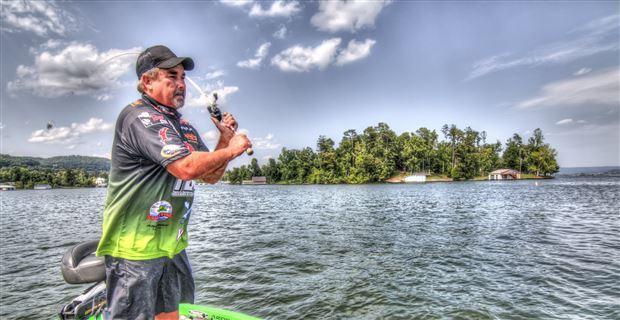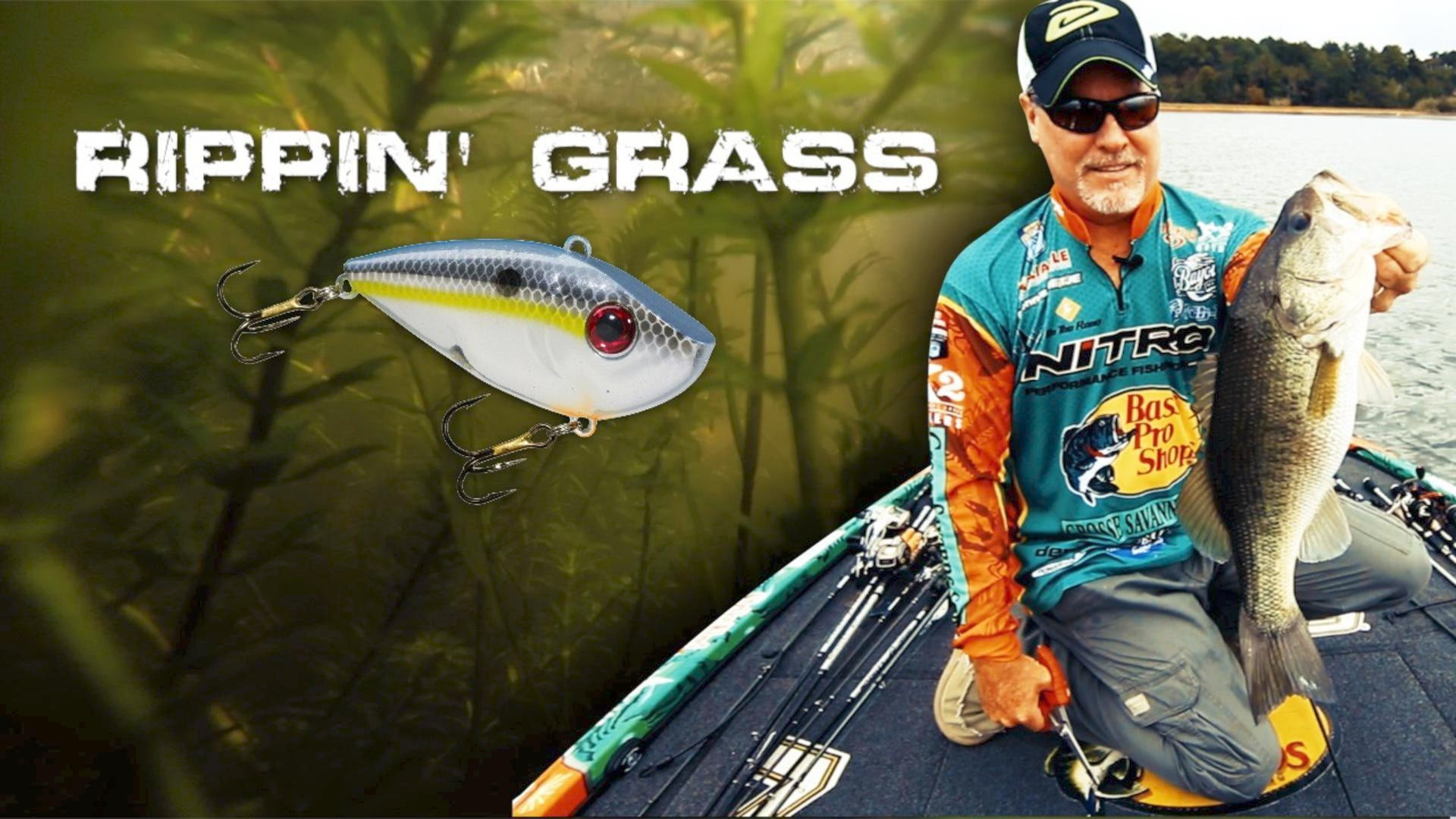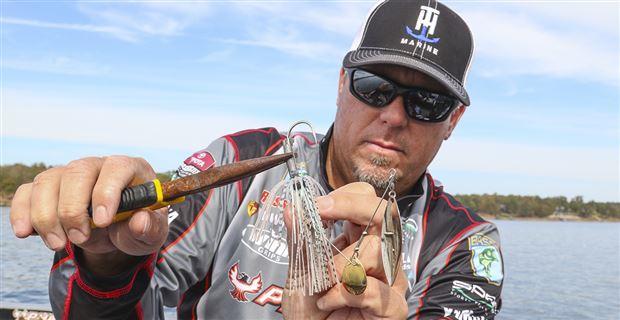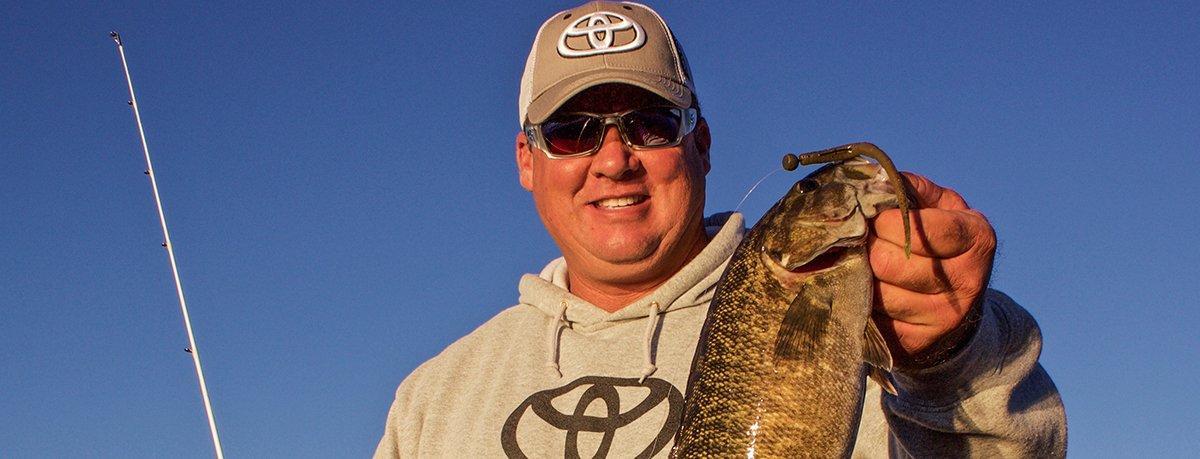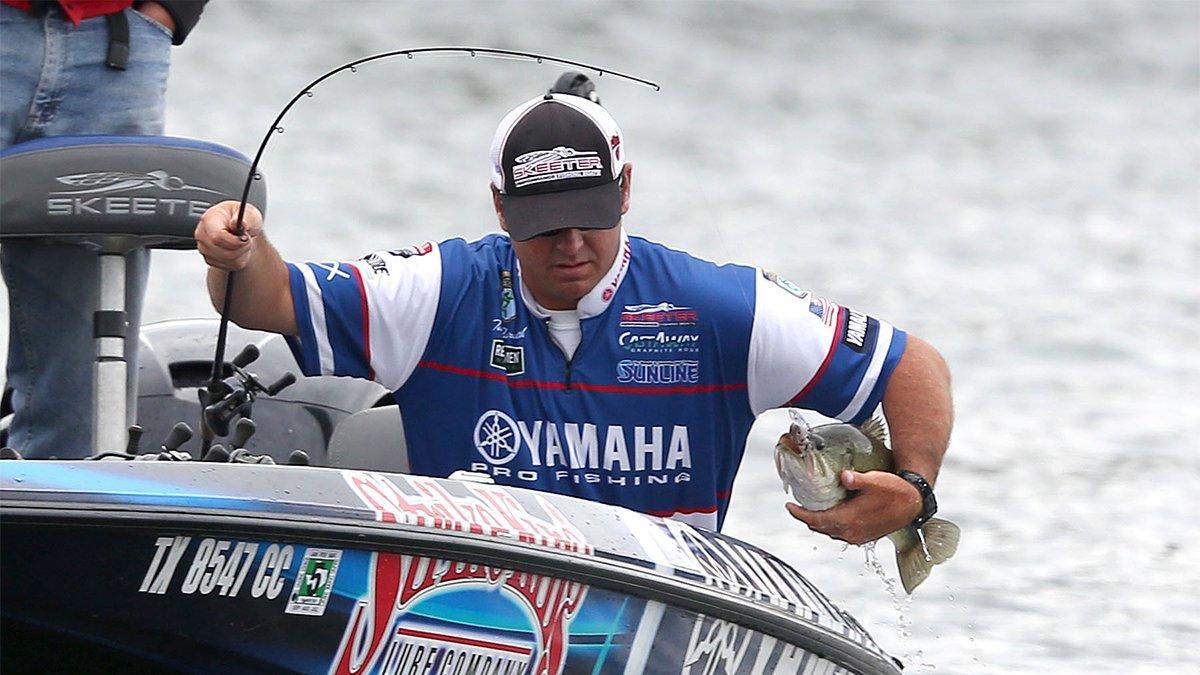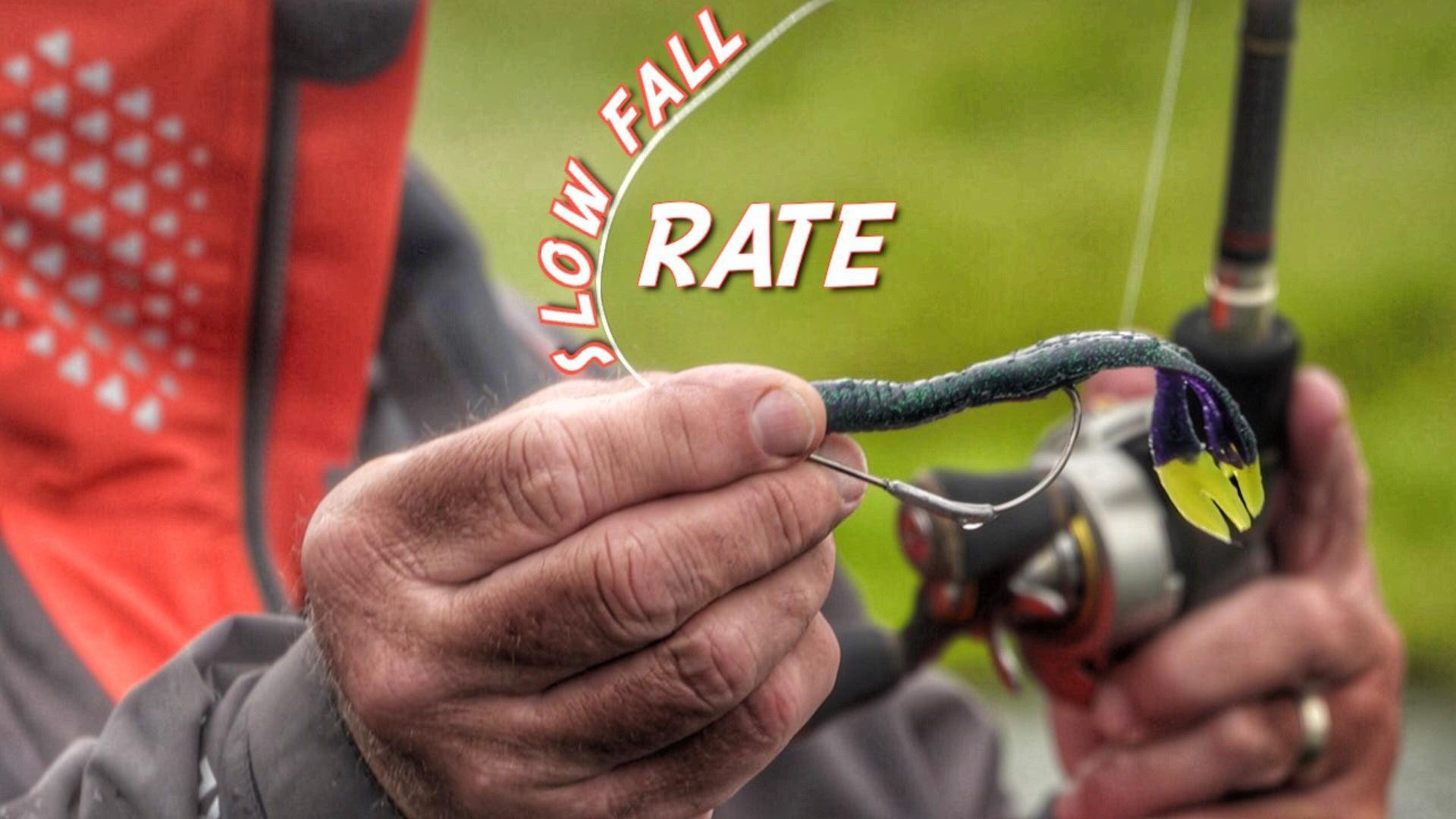Fishing with baitcasters definitely has advantages. More line capacity. Using heavier, thicker lines. Casting distance, as well, should be one of them. Many anglers, however, are not optimizing their reels and their technique to get the most casting distance when bass fishing with casting reels. More distance often equates to more time presenting a lure to fish.
As such, here is a compilation of the best tricks I’ve found to get more out of your casting reels.
DON’T FILL THE SPOOL
While you want to fill a spinning reel spool just shy of the edge of the taper on the spool, you can actually get away with having less line on a baitcaster. Because the spool itself un-spins the line from the spool, there is not the friction you have with a spinning reel spool. If a spinning reel spool is half full, it will not cast as well because there is increased friction as the line uncoils off the spool.
With a baitcaster, you can cast to the very bottom of the spool with the same lack of friction as you would if the spool was full. Having less line on a baitcaster spool, allows the spool to spin more freely increasing it’s efficiency and your distance. You also don’t have line rubbing on the frame from being too full.
If it’s a small spool, you need to be sure you have adequate line for long casts. But consider this: are you casting 60 yards? That’s 180 feet. That would be a long, healthy cast. So I’ve started spooling my reels with less line. Because of this, I don’t use backing and now a 250-yard filler spool of line will fill 4 reels instead of 2 1/2. Which in turn, saves me money.

MATCH ROD ACTION TO LURE WEIGHT
If you are throwing lighter lures, you will get more distance by letting the rod load more on the back cast. For this to happen, you need to go down in power. So if you want to throw a 1/4 or 3/8 ounce lure farther, go down to a medium-power rod from a medium-heavy power rod.
Likewise if you are throwing a heavier lure, say 3/4 ounce, you can load a more powerful rod like a medium-heavy to get more spring on the release. So going up in power with heavier lures and raring back and firing with a lot of load on the rod will launch your bait farther.
See 8 factors that affect your casting distance
CORRECT YOUR CASTING MOTION
Anglers spending hundreds of hours on the water a year often encounter forearm and elbow injuries. I suffer greatly from severe tendonitis in both of my forearms. I have to wear straps and ice down after every fishing trip.
I mention all that, because I had to change my casting motion as a result. Those injuries are caused by overextension on tens of thousands of casts a year. But what I learned along the way, is that by shortening your motion by keeping your elbows tight to your sides, you can more effectively load and unload a rod on the cast which is what creates the inertia on the lure to give it distance. Let the rod load and unload without swinging your arms back and forward.
Never extend your arm all the way completely straight. Keep your elbows bent and tight. Feel how much more powerful the rod loads and unloads.
Check out Aaron Martens tips on avoiding arm injuries in fishing

SET LESS BRAKES WITH BRAID
Because braid is lighter and tighter on a spool and the line diameter is often much smaller than monofilament or fluorocarbon, you can get away with less brakes on your reel, giving you greater distance and better efficiency. So keep that in mind. Turn down the brakes with braid and turn them up slightly with fluoro or mono. Eventually you want to turn them all down to achieve maximum distance.
LINE UP YOUR LINE GUIDE
On most reels the line guide is the narrowing opening where the line comes off the spool and starts up the rod. If this is over to one side or the other on the reel, it causes added friction on a cast. By making sure it’s in the middle when you click the thumbar to cast, you will have less friction on the reel.
Newer reels like the new Daiwa TWS line of reels, use an open port system to alleviate the line guide friction on the cast.
USE BRAID AS BACKING
If you do like to use backing (line under your main line so you only have to replace small sections of line), braid can be a better option for casting distance. You can wrap the line around the spool as tight as possible, and it’s like increasing the diameter of the spool without adding as much weight. Braid allows the spool to spin faster, making it more efficient.
See how to back your reels with braid
LET OUT MORE LINE
When casting heavier lures, a longer leash can give you many more yards on your cast. Guys like Kevin VanDam have mastered this which is one of the reasons he catches more bass than the average guy on a deep crankbait. He’s literally throwing farther, getting it deeper and staying in the strike zone longer … on every cast.
Obviously what’s behind you should be considered (other anglers in the boat, trees on the bank, etc). But you can let 5-6 feet of line out on a cast and increase the load on the rod to give it more release on the cast which equates to more distance. I often do this with swimbaits and deep diving crankbaits to get maximum exposure on every cast.
See Jonathan VanDam demonstrate more line on casting distance
THUMB HARD FIRST
The simplest thing you can do to increase your distance with baitcasters is by training your thumb to be the brakes. Then you can reduce tension and brakes and have a freer spinning spool. Start with the tension tight. Push the thumb bar. The lure should not drop off the rod tip. Now slowly turn the tension down. When the bait starts to barely fall, start training your thumb.
Cast and control the spool with your thumb. It won’t cast very far at first. The key is to let the spool spin under your thumb but maintain feel so that no loops begin to form. That is the sign the reel spool is spinning faster than the lure is pulling line off the reel. That’s what causes overrun (backlashes).
Loosen the tension more. Now you are going to have to thumb harder at the very start of the release. You are still letting the line spin under your thumb but you have a bit more pressure because the startup inertia of the spool is going to be initially faster than the lure is going to pull the line off of the reel. You have to control that with early pressure then back off your thumb as the lure gets farther from you. This will take training your thumb.
You essentially thumb hard at first, not completely, but harder than you do in the middle of the cast. Then hard again at the end of the cast to feather the lure into the water softly and stop the line before the lure actually hits.
Hard-soft-hard. That’s the pattern when casting with a baitcaster with your thumb only. Learning this, coupled with these other tips, will give you the maximum casting distance when bass fishing with baitcasters.

MORE HELP WITH BAITCASTERS:
Master Your Casting in Fishing
How to Cast to Shallow Fishing Cover




